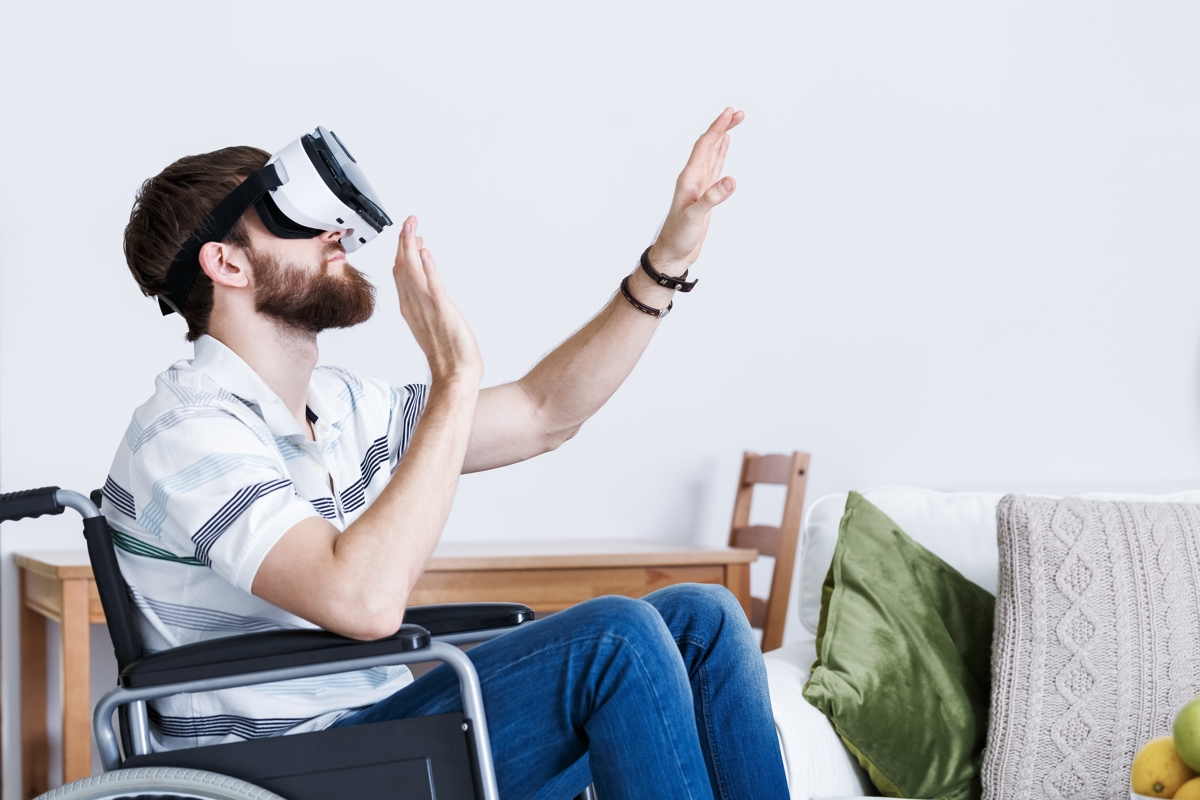BRAIN GAME
- Scientists have been exploring its potential as a means of treating people suffering from chronic pain.
- Stanford University’s VRIT Lab & Clinic has been exploring treatment interventions for psychosomatic illnesses using mirror visual feedback.
- Ina study at Cedars-Sinai Medical Center in LA, patients in moderate to severe pain reported a 52 per cent decrease in pain.
The potential of virtual reality to change the gaming experience is now old news. The past decade has seen products such as the HTC Vive and Oculus Rift go from concept drawing board to consumer product, and developers have been crafting increasingly immersive experiences for players across platforms. VR has also been touted as a useful tool for training engineers and surgeons. More recently, scientists have been exploring its potential as a means of treating people suffering from chronic pain. And the potential is vast.
Brain reprogramming
“I’m talking about chronic pain where you can actually permanently decrease the pain sensation,” says Dr Kim Bullock, Neuropsychiatrist and Founding Director of Stanford University’s Virtual Reality Immersive Technology (VRIT) Lab and Clinic. “Just like you can amputate a phantom limb, you can actually reprogram motor and sensory symptoms rather than just treating them or distracting.”
One of the means Dr Bullock was exploring for treating psychosomatic illnesses is mirror visual feedback. It works by tricking the brain. “If you’re moving your left hand and are visually seeing your right hand move, the brain goes, ‘What’s going on? We better wake up and learn something’,” explains Dr Bullock. “So you get programmed and primed to learn — you’re more [neuro] plastic, so if you’re doing any motor and sensory reprogramming, it’s enhanced. This is a very primitive form of VR that has been shown to be quite effective for unilateral motor and sensory illnesses, and lots of chronic pain syndromes.”
Just like you can amputate a phantom limb, you can actually reprogram motor and sensory symptoms rather than just treating them or distracting.
As Dr Bullock was demonstrating a VR platform for treating psychosomatic illness, a fellow researcher with a chronic pain problem who was trying it out saw improvement in his condition, which led to national news coverage. She offers a laundry list of conditions that mirror therapy has been shown to be effective for treating: post-stroke hemiparesis, post-hand surgery, rheumatic pain, phantom limbs, complex regional pain syndromes, cerebral palsy, multiple sclerosis, Parkinson’s and overuse syndrome. “That’s a lot of what makes up chronic pain.”
Thanks to neuroimaging data, Dr Bullock says there have been documented changes in the motor cortex. “The M1 motor pathway seems to be straightened, so there’s some kind of plasticity changes going on.
“There is some kind of mirror neuron activation and there are actual neurobiological changes that are going on with a visual optical illusion, which can affect neuroplasticity.”
Pain reduction
Meanwhile, researchers at Cedars-Sinai Medical Center in Los Angeles, in collaboration with appliedVR, a VR start-up, and Samsung Electronics America, conducted a randomised controlled trial of 120 hospitalised patients with moderate to severe pain. “The intervention group watched calming videos on a VR headset, while the control group watched similar content on a TV,” says Dr David Rhew, Chief Medical Officer, VP and GM of B2B Healthcare at Samsung Electronics America. “The results showed a 52 per cent decrease in pain for patients receiving the VR treatment.
“A second study at Cedars-Sinai involves the use of VR in combination with a TENS [transcutaneous electrical nerve stimulation] unit and a wearable.
The goal of this study is to determine if a digital pain reduction kit can reduce chronic pain symptoms and expedite time to work for individuals receiving worker’s compensation.
“The goal of this study is to determine if a digital pain reduction kit can reduce chronic pain symptoms and expedite time to work for individuals receiving worker’s compensation.” Therapeutic VR refers to the use of VR to treat medical conditions. “With respect to pain management, the videos in VR are often of calming scenes such as flying over beautiful topographies, swimming with blue whales or lying on a beach,” Dr Rhew tells GN Focus.
For Dr Bullock, the application of cognitive behaviour therapy in virtual reality could be a game changer for pain medicine. “I think we’ll be able to do more of that cognitive work and behavioural training that can also tremendously help pain patients by using VR.”
Mental health and chronic pain
There’s a connection between mental health and chronic physical pain, says Farah Dahabi, Clinical Social Worker and Mental Health First Aid Lead at Lighthouse Arabia. “Our mind and body are inextricably connected and are always communicating with one another. Just as our physical health impacts how we think, feel and behave — our emotional health also positively or negatively affects how we experience pain.
“People experiencing chronic pain are three times more likely to experience depression or anxiety, while people suffering from depression are three times more likely to develop chronic pain.”
People experiencing chronic pain are three times more likely to experience depression or anxiety, while people suffering from depression are three times more likely to develop chronic pain.
Dr Bullock describes herself as a “radical behaviourist”. “I think anything a human does is a behaviour. An emotion is a behaviour, digesting your food is a behaviour… Everything can be conceptualised as a behaviour and it’s under the influence of behavioural principles such as operant conditioning and classical conditioning. When you can get people to stop acting on their pain behaviours, often they start to feel less pain because they’re not acting like they’re in pain.
“Behaviour, emotion and sensation are intimately linked.”
Source: VR in mind for pain management













